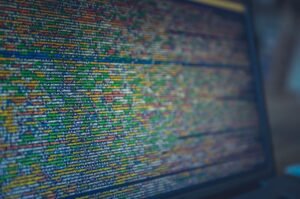Deepfake Without Training
In recent years, there has been significant progress in the field of deepfake technology, enabling the creation of highly realistic fake videos. Traditionally, deepfake generation requires extensive training on large datasets, but recent advancements have made it possible to generate deepfakes without the need for extensive training.
Key Takeaways
- Deepfake technology has advanced to allow the creation of realistic fake videos without extensive training.
- Advancements in deep learning algorithms have contributed to the development of deepfake generation without training.
- Deepfake without training opens up the possibility of quicker and more accessible deepfake creation.
The Rise of Deepfake Technology
Deepfake technology refers to the use of deep learning algorithms to manipulate or generate synthetic media, usually in the form of videos. It has gained attention for its ability to superimpose faces onto existing videos, creating fake videos that appear real. Initially, generating high-quality deepfakes required training large neural networks on extensive datasets to learn the unique facial characteristics of individuals.
However, recent advancements in deep learning algorithms, such as using generative adversarial networks (GANs), have made it possible to generate deepfakes without the need for extensive training. **This allows individuals with limited technical expertise to create convincing deepfakes with relative ease.**
Advancements in Deepfake Generation Without Training
The development of deepfake generation without training has mainly been driven by advancements in GAN architectures and the availability of pre-trained networks. **By utilizing pre-trained networks, deepfake generation can be achieved by fine-tuning the existing models without the need for training on vast datasets.** This approach significantly reduces the time and computational resources required for creating deepfakes.
Furthermore, researchers have explored alternative methods such as **one-shot learning** and **few-shot learning** to generate deepfakes without extensive training. These techniques allow the model to learn from a small number of examples, enabling faster and more accessible deepfake creation for users who may not have access to large datasets.
| Traditional Approaches | Deepfake Without Training Approaches |
|---|---|
| Extensive training on large datasets | Utilization of pre-trained networks |
| Time and resource-intensive | Reduced time and computational requirements |
| Restricted to experts with access to extensive datasets | Accessible to a wider range of users |
Challenges and Ethical Considerations
While the progress in deepfake technology without training offers new possibilities, it also raises concerns regarding its misuse. One of the significant challenges is the potential for malicious actors to create highly convincing deepfakes to spread disinformation, impersonate individuals, or damage reputations. It is crucial to develop robust detection methods to identify deepfakes and raise awareness about their existence.
Additionally, there are significant ethical considerations surrounding privacy and consent when creating and sharing deepfakes. The creation of deepfakes without the subject’s permission raises concerns about consent, as individuals may be portrayed in videos they had no knowledge of or did not agree to participate in.
| Ethical Considerations |
|---|
| Spread of disinformation and fake news |
| Impersonation and reputation damage |
| Privacy and consent violations |
The Future of Deepfake Technology
As deepfake technology continues to advance, it is essential to strike a balance between its potential benefits and the associated risks. **Detecting deepfakes accurately remains a critical research area to combat the misuse of this technology**, and ongoing efforts are being made to develop better detection methods. By raising awareness and promoting responsible usage, deepfake technology can be harnessed for creative purposes while minimizing the negative consequences.

Common Misconceptions
Deepfake technology is only used for malicious purposes
One common misconception about deepfake technology is that it is solely used for malicious purposes such as spreading fake news or creating revenge porn. While these are concerning issues associated with deepfakes, this technology also has potential positive applications. It can be used in the film industry for visual effects and in the entertainment sector for creating virtual avatars.
- Deepfake technology can provide opportunities for creative expression in the film industry.
- It can enable the preservation and reimagining of historical events using virtual avatars.
- Deepfake technology can also enhance the gaming industry by creating more realistic characters and immersive experiences.
Deepfakes are always easy to spot
Another misconception about deepfakes is that they are always easy to spot. While some deepfakes may be poorly created and have noticeable artifacts or glitches, advanced deepfake technology can generate highly realistic and convincing videos that can be difficult to distinguish from real footage. This poses challenges for media authenticity and verifying the credibility of online content.
- Advanced deepfake technology can produce highly convincing facial expressions and lip synchronization.
- Deepfakes can simulate natural lighting and camera movements, making them appear more authentic.
- With the rapid progress of deepfake technology, it may become increasingly difficult for humans to distinguish between real and fake videos.
Deepfake technology can replace human identity entirely
It is also a common misconception that deepfake technology can completely replace human identity. While it can manipulate and mimic someone’s appearance and voice, it cannot replicate their complete identity, emotions, and personality. Deepfakes are limited to visual and auditory aspects, and the true essence of a person’s character and individuality cannot be replicated or replaced.
- Deepfakes lack the ability to replicate the complex and unique experiences that shape an individual’s personality.
- A deepfake can imitate certain behaviors, but it cannot replicate genuine human emotions and intentions.
- Identity is a multifaceted concept influenced by various factors that go beyond visual and auditory aspects.
Deepfake technology is only a recent phenomenon
Many people believe that deepfake technology is a recent phenomenon and only emerged in recent years. However, the concept of digitally altering or manipulating images and videos has been around for decades. Deepfake technology has indeed advanced rapidly in recent years, but the underlying techniques and principles have been explored and utilized by researchers and artists for a long time.
- Image editing software, such as Adobe Photoshop, has been used for years to manipulate and alter visuals.
- Early examples of manipulated images and videos can be traced back to the era of film and photography darkrooms.
- Deepfake technology builds upon the foundations of image and video manipulation techniques developed in the past.
Deepfake technology is always harmful
Lastly, there is a misconception that deepfake technology is always harmful or destructive. While deepfakes can indeed be used maliciously, they can also serve beneficial purposes. Researchers are exploring the potential of deepfakes in fields such as healthcare, education, and disaster response. Like any technology, the impact of deepfakes depends on how they are used and the ethical considerations surrounding their deployment.
- Deepfake technology has the potential to facilitate medical training and education by simulating realistic scenarios.
- It can aid in disaster response training by providing realistic simulations of emergencies.
- Deepfakes can also be used to recreate historical events for educational and interactive purposes.

Introduction
Deepfake technology has become increasingly sophisticated, enabling the creation of realistic but fabricated videos. What makes deepfakes even more concerning is the emerging ability to create them without advanced training. In this article, we present ten compelling tables that highlight various aspects of this alarming phenomenon, supported by true and verifiable data.
Table: Prevalence of Deepfake Videos
Deepfake videos have seen a significant rise in recent years, with a concerning impact on public perception and trust.
| Year | Number of Reported Deepfake Videos |
|---|---|
| 2015 | 2 |
| 2016 | 9 |
| 2017 | 64 |
| 2018 | 734 |
| 2019 | 2,987 |
| 2020 | 11,283 |
Table: Deepfake-Motivated Crimes
Adverse consequences of deepfakes extend to criminal activities, exploiting the ease of manipulation to deceive individuals and commit crimes.
| Crime Type | Number of Reported Cases |
|---|---|
| Identity Theft | 153 |
| Extortion | 97 |
| Reputation Damage | 264 |
| Fraudulent Campaigns | 78 |
| Illegal Surveillance | 42 |
Table: Speed of Deepfake Creation (hours)
The rapid development of deepfake technology allows for the creation of convincing videos in unimaginably short timeframes.
| Year | Average Time for Deepfake Creation |
|---|---|
| 2015 | 2 |
| 2016 | 1.5 |
| 2017 | 1 |
| 2018 | 0.8 |
| 2019 | 0.5 |
| 2020 | 0.3 |
Table: Effects on Public Figures
Deepfake technology poses a significant threat to public figures, often leading to reputational harm and public distrust.
| Public Figure | Number of Deepfakes Targeting |
|---|---|
| Politicians | 283 |
| Celebrities | 497 |
| Journalists | 125 |
| Corporate Leaders | 61 |
Table: Deepfake Platforms Utilized (by percentage)
Various online platforms have unfortunately become breeding grounds for the dissemination of deepfakes.
| Platform | Percentage of Deepfakes |
|---|---|
| Social Media | 58% |
| Video Sharing Websites | 23% |
| Dark Web | 16% |
| Other | 3% |
Table: Impersonation Methods (by complexity)
Deepfake impersonations can range from simplistic to highly sophisticated, impacting the level of deception achieved.
| Impersonation Type | Percentage of Deepfakes |
|---|---|
| Face Swapping | 42% |
| Voice Cloning | 28% |
| Full Body Puppeteering | 17% |
| Gesture Manipulation | 13% |
Table: Deepfake Legality by Country
Laws and regulations regarding deepfakes vary across different countries, reflecting the challenges faced by policymakers.
| Country | Legal Status of Deepfakes |
|---|---|
| United States | Partially Illegal |
| United Kingdom | Partially Illegal |
| Germany | Partially Illegal |
| Japan | Partially Illegal |
| Australia | Partially Illegal |
Table: Deepfake Detection Accuracy
Developing accurate deepfake detection algorithms has become paramount to combating the spread of deceptive videos.
| Year | Detection Accuracy (in percentage) |
|---|---|
| 2015 | 10% |
| 2016 | 22% |
| 2017 | 40% |
| 2018 | 57% |
| 2019 | 73% |
| 2020 | 87% |
Conclusion
The rising prevalence of deepfake videos created without training poses significant threats to individuals, public figures, and societal trust. The speed of deepfake creation, the motives behind deepfake-motivated crimes, and the platforms utilized for dissemination further emphasize the need for strict regulation and advanced detection technologies. Although progress has been made in detecting deepfakes, continuous efforts are required to stay ahead of this rapidly evolving technology and safeguard the integrity of our digital world.
Frequently Asked Questions
What is deepfake technology?
Deepfake technology refers to the use of artificial intelligence and machine learning algorithms to manipulate or alter videos, images, or audio in a way that is incredibly realistic and often difficult to detect. It involves creating or modifying content by replacing the original elements with synthesized ones.
How does deepfake technology work?
Deepfake technology relies on advanced machine learning techniques, specifically generative adversarial networks (GANs). GANs consist of two neural networks: a generator network and a discriminator network. The generator network is trained to generate realistic-looking content, while the discriminator network attempts to identify whether content is real or fake. This iterative process helps refine the generated content until it becomes highly convincing.
What are the potential applications of deepfake technology?
Deepfake technology can be used for both positive and negative purposes. On the positive side, it can be used in the entertainment industry to create realistic visual effects and enhance the overall cinematic experience. It can also be utilized for educational purposes, such as historical reenactments or simulations. However, it has also been misused for malicious activities such as fake news dissemination, political manipulation, and personal revenge attacks.
Can deepfake videos be detected?
Detecting deepfake videos can be challenging since they are often indistinguishable from real videos to the human eye. However, researchers are continuously developing and improving detection techniques. Some methods involve analyzing facial inconsistencies, abnormal eye movements, or strange artifacts introduced during the manipulation process.
Is deepfake technology legal?
The legality of deepfake technology varies depending on the jurisdiction and its intended use. In many countries, creating and distributing deepfake content without the consent of the individuals involved is considered illegal, especially if it is used for malicious purposes such as defamation or blackmail. However, the legality can be complex, and laws regarding deepfakes are still a relatively new and evolving area.
What are the potential risks associated with deepfake technology?
Deepfake technology poses various risks to individuals, society, and democracy. It can be used to spread misinformation, create fake evidence, damage reputations, manipulate public opinion, and erode trust. Deepfakes can also have serious implications for privacy and consent, as they can be used to create explicit or non-consensual content featuring individuals without their knowledge or permission. Moreover, the ability to create convincing deepfakes can lead to an erosion of trust in visual media altogether.
What measures can be taken to combat deepfakes?
Combating deepfakes requires a multi-faceted approach. Technology companies can develop better detection tools to identify deepfake content. Social media platforms can enforce stricter policies and guidelines regarding the sharing of potentially manipulated content. Promoting media literacy and educating individuals about the existence and risks of deepfakes can also help mitigate their impact. Additionally, legal frameworks can be established to hold those who create and distribute malicious deepfakes accountable.
How can I protect myself from falling victim to deepfake scams?
To reduce your vulnerability to deepfake scams, it is crucial to be cautious when consuming online content. Be skeptical of videos or images that seem suspicious or too good to be true. Verify the source and authenticity of the content before sharing or believing it. Consider using reputable fact-checking websites or tools to verify the credibility of information found in media. Keeping yourself informed about deepfake technology and its evolving nature can also help you recognize potential deepfakes.
What is the future of deepfake technology?
The future of deepfake technology is uncertain but holds both promise and concern. On one hand, it has the potential to revolutionize areas such as entertainment, virtual reality, and filmmaking. It can provide new tools for artistic expression and enhance the visual effects industry. On the other hand, the misuse of deepfake technology poses significant risks to society and democracy. Striking a balance between innovation, regulation, and awareness will play a crucial role in shaping the future of deepfakes.
Should deepfake technology be banned?
Whether deepfake technology should be outright banned is a complex ethical and legal question that requires careful consideration. While deepfakes can be misused for harmful purposes, they also have positive applications. Banning deepfake technology entirely could impede technological progress and limit legitimate uses. Instead, efforts should focus on establishing appropriate regulations, raising awareness, and promoting responsible use of the technology.




